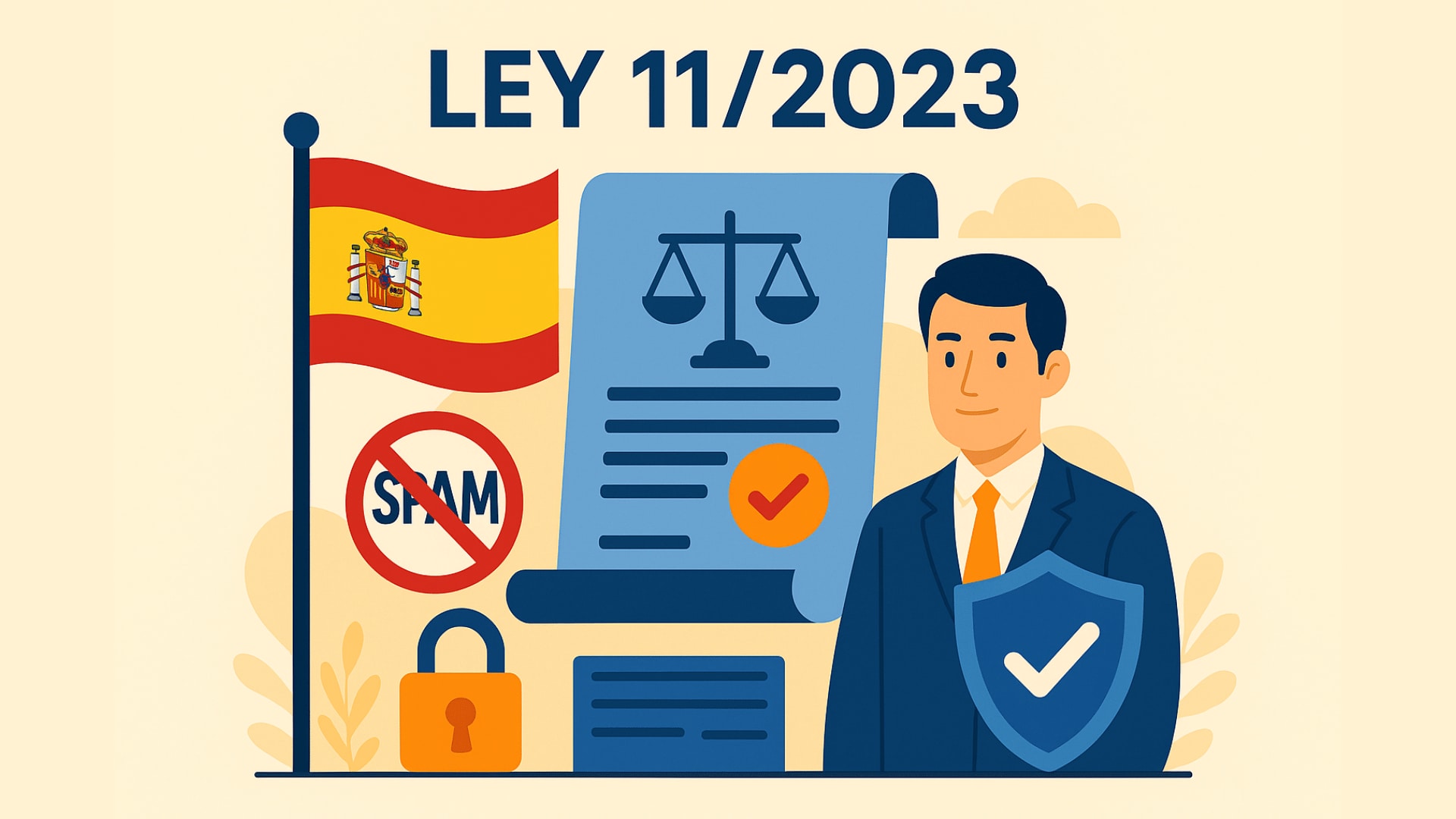
For companies offering digital services in Spain, June 28, 2025, marks a significant shift. On this date, Spain’s Ley 11/2023 comes into full effect, making digital accessibility a legal requirement for many private-sector businesses. This law puts the European Accessibility Act (EAA) into national practice, enforcing standards designed to make digital services and everyday products more usable for people with disabilities.
But what exactly is the EAA, how does Ley 11/2023 affect your business and what steps should you take to stay compliant and competitive?
Table of contents
The EAA and the Goal of Ley 11/2023
The European Accessibility Act was introduced to create consistent accessibility standards across the European Union. It focuses on making digital services and essential products usable for individuals with disabilities — such as those who are blind, deaf, or have limited motor or cognitive function. Member states were required to translate this directive into national law, and Spain did so with Ley 11/2023.
Unlike earlier accessibility laws that mainly applied to the public sector, this law expands the responsibility to the private sector. Businesses offering digital goods or services to Spanish consumers — whether directly through apps and websites or indirectly through devices like ATMs or ticket machines — are required to ensure accessibility. This shift recognizes digital inclusion as a fundamental right, not just an optional feature.
Who Must Comply With Spanish Accessibility Law?
If your business provides consumer-facing services — especially online — chances are, this law applies to you. From online retailers and banking platforms to media services, transport booking systems, and telecom providers, a wide range of industries are covered.
Even if your company is based outside of Spain, as long as you serve Spanish users, compliance is expected. Smaller firms—specifically microenterprises with fewer than ten employees and less than €2 million in annual turnover—may be exempt in certain service-related cases. However, this exemption generally doesn’t apply if the business manufactures physical products for consumers.
There’s also a mechanism for exemption in cases where compliance would place a disproportionate burden on the business. This might include technical limitations or high costs, but it must be formally documented and justified.
What Must Be Accessible?
Accessibility extends beyond the surface. Ley 11/2023 requires that digital platforms—like websites and mobile apps—be designed and maintained to work seamlessly with assistive technologies. This includes support for screen readers, keyboard navigation, text alternatives for images, transcripts for videos, and clear, intuitive layouts.
On the product side, interactive devices like self-service terminals, ATMs, and electronic ticket machines must also be accessible. Design must account for users with physical, visual, or auditory impairments, offering appropriate alternative inputs and feedback.
The law is grounded in technical standards like EN 301 549, which is based on the internationally recognized WCAG 2.1 Level AA guidelines. These help define what makes a digital service or interface truly accessible and usable for all users.
Deadlines and Documentation of Ley 11/2023
The key date every business should mark is June 28, 2025. By then, all covered businesses must ensure that their digital and physical services meet the new accessibility requirements.
Getting ready for this deadline involves more than just updating your website. The process starts with a detailed accessibility audit to assess current performance against the standards. From there, businesses should create a plan to address any issues. This might involve interface redesign, improvements to content clarity, or enhanced compatibility with assistive technologies.
Crucially, Ley 11/2023 also emphasizes the importance of transparency. For digital services, companies must publish an accessibility statement that describes the current state of compliance, outlines known limitations, and provides contact options for users to report problems or request assistance. For physical products, relevant technical documentation is needed, and applying the CE marking can serve as evidence that accessibility has been addressed as part of broader EU compliance requirements.
Documentation isn’t just a formality — it’s a core part of legal accountability. Being able to show your efforts toward accessibility is vital if your business is ever reviewed by Spanish authorities.
Risks and Penalties of Ley 11/2023
Non-compliance with Ley 11/2023 carries serious risks — both financial and reputational. Businesses that fail to meet the law’s requirements face a tiered system of penalties. Minor infractions can result in fines up to €30,000, while moderate violations may lead to penalties ranging from €30,000 to €150,000. In the case of very serious violations, fines can rise to €600,000.
Beyond monetary fines, repeat offenders may face additional sanctions — including bans from operating within Spain for up to two years or removal of non-compliant products and services from the market. These outcomes can significantly disrupt business operations and lead to lasting damage to brand reputation.
There’s also a long-term cost to ignoring accessibility: exclusion. When users can’t interact with your services, they leave. That means lost sales, fewer returning customers, and a negative perception that can spread quickly through online reviews and social media.
Preparing for Compliance for Ley 11/2023
Ensuring compliance means rethinking how your services are designed and delivered. Start by reviewing your digital platforms and physical products to see which parts of your offering fall within the scope of Ley 11/2023. An internal or third-party accessibility audit can provide valuable insight into where changes are needed most urgently.
From there, develop a roadmap for compliance. Make improvements incrementally if necessary, prioritizing key services and user interactions first. Train your team to recognize and implement accessibility best practices—especially those involved in web development, UX design, and customer support.
Accessibility must also be monitored over time. Regular reviews, user testing (including feedback from people with disabilities), and updated documentation are essential for long-term compliance. Standards evolve — what works in 2024 may not meet expectations in 2026. Staying proactive is the best defense against both legal consequences and user dissatisfaction.
Accessibility and CAPTCHA
While most businesses focus on visible interface elements when thinking about accessibility, security features like CAPTCHA often go overlooked. These tools, used to block automated bots, can unintentionally exclude users with visual or motor impairments — especially if they rely on distorted images or audio puzzles that are difficult to interpret with assistive devices.
Fortunately, there are more accessible alternatives. For example, captcha.eu offers a privacy-first, user-friendly CAPTCHA solution that is fully compliant with GDPR and designed with accessibility in mind. By leveraging behavioral signals and non-intrusive validation, businesses can protect their websites from abuse without creating unnecessary barriers for legitimate users.
Choosing the right security solution is part of being inclusive. Accessibility and protection don’t have to conflict — they can and should work together to create a safer, more usable web.
Conclusion
Ley 11/2023 is more than another legal hurdle — it’s a signal that inclusive digital design is now a business imperative in Spain. It offers companies a chance to not only meet their legal responsibilities but also to create better, fairer services that reach more users and inspire greater trust.
The deadline is approaching quickly. Businesses that act now will be well-positioned to lead in a more accessible digital economy. Those that delay risk costly fines, lost users, and avoidable damage to their reputation.
Incorporating accessibility, along with thoughtful digital protections like those provided by captcha.eu, allows you to build digital services that are secure, respectful of user privacy, and inclusive by design.
FAQ – Frequently Asked Questions
What is Ley 11/2023?
Ley 11/2023 is Spain’s national law that implements the European Accessibility Act (EAA). It requires many private-sector businesses to make their digital services and certain consumer products accessible to people with disabilities. The law applies from June 28, 2025.
What is the European Accessibility Act (EAA)?
The EAA is an EU-wide directive aimed at improving accessibility for key digital and physical services. It ensures that people with disabilities can use websites, mobile apps, ATMs, e-books, banking services, and more without barriers. Each EU country, including Spain, must turn it into national law — hence Ley 11/2023.
Who needs to comply with Ley 11/2023 in Spain?
Any business that offers digital services or consumer-facing products in Spain must comply. This includes online retailers, banks, telecom providers, streaming platforms, and manufacturers of devices like ticket machines or ATMs. Even foreign businesses are covered if they serve Spanish consumers.
What is the deadline to comply with Ley 11/2023?
The law comes into effect on June 28, 2025. Businesses must ensure their digital services and affected products meet accessibility requirements by this date.
What are the penalties for non-compliance with Ley 11/2023?
Fines can range from €30,000 for minor issues to €600,000 for serious violations. Repeat offenders may face service suspensions, product bans, or even temporary exclusion from the Spanish market. Non-compliance can also damage a business’s reputation and customer trust.
100 free requests
You have the opportunity to test and try our product with 100 free requests.
If you have any questions
Contact us
Our support team is available to assist you.




